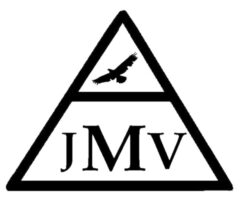Jiaxiao Li, Mohammed S O Al-Amoudi
Cite
Li J, Al-Amoudi MSO. Utilizing Respiratory Rate in APRV-TCAV protocol on Puritan Bennett Ventilator. A Case Report. J Mech Vent 2025; 6(1):44-51.
Abstract
Background
Airway Pressure Release Ventilation (APRV), particularly with the Time-Controlled Adaptive Ventilation (TCAV) protocol, is known to improve oxygenation and respiratory mechanics. However, its role in managing refractory hypercapnia remains underexplored. This case report highlights APRV with TCAV as a potential strategy to tackle refractory hypercapnia.
Case Report
A 43-year-old woman with acute hypoxic and hypercapnic respiratory failure was admitted to our intensive care unit. Over the first 24 hours of management via conventional ventilation modes, she progressed to refractory hypercapnia, leading us to initiate modified APRV settings with TCAV protocol on the Puritan Bennett 980 ventilator (PB 980). This intervention led to rapid improvement in PaCO2, successful transition to PSV, and eventual liberation.
Discussion
Our literature review revealed limited research on the use of higher controlled respiratory rates in APRV with TCAV. This case demonstrates the potential of this approach, emphasizing the importance of adhering to TCAV principles while optimizing respiratory rate settings. Additionally, we provide insights into APRV titration on the PB 980.
Conclusion
This report supports the use of APRV with higher controlled respiratory rates, adhering to TCAV protocols, as an effective strategy for managing refractory hypercapnia. Further research is warranted to establish evidence-based guidelines.
Keywords: CPAP, Time-Controlled Adaptive Ventilation (TCAV), Refractory Hypercapnia, Ventilation Strategies, Airway Pressure Release Ventilation (APRV)
References
| 1. Jain SV, Kollisch-Singule M, Sadowitz B, et al. The 30-year evolution of airway pressure release ventilation (APRV). Intensive Care Med Exp 2016; 4(1):11. https://doi.org/10.1186/s40635-016-0085-2 PMid:27207149 PMCid:PMC4875584 | |||
| 2. Al-Khalisy H, Nieman GF, Kollisch-Singule M, et al. Time-Controlled Adaptive Ventilation (TCAV): a personalized strategy for lung protection. Respir Res 2024; 25(1):37. https://doi.org/10.1186/s12931-023-02615-y PMid:38238778 PMCid:PMC10797864 | |||
| 3. Habashi NM. Other approaches to open-lung ventilation: airway pressure release ventilation. Crit Care Med 2005; 33(3 Suppl):S228-S240. https://doi.org/10.1097/01.CCM.0000155920.11893.37 PMid:15753733 | |||
| 4. Al-Khalisy H, Nieman GF, Kollisch-Singule M, et al. Time-Controlled Adaptive Ventilation (TCAV): a personalized strategy for lung protection. Respir Res 2024; 25(1):37. https://doi.org/10.1186/s12931-023-02615-y PMid:38238778 PMCid:PMC10797864 | |||
| 5. Spiegel R, Hockstein M. Airway Pressure Release Ventilation: A field guide for the emergency physician. Emerg Med Clin North Am. 2022;40(3):489-501. doi:10.1016/j.emc.2022.05.004 https://doi.org/10.1016/j.emc.2022.05.004 PMid:35953213 | |||
| 6. Pequignot B. Effects of TCAV and Volume Control Ventilation on the distribution of aerated lung parenchyma in ARDS patients (TCAV-CT). Clinicaltrials.gov. February 7, 2024. Accessed December 16, 2024. https://clinicaltrials.gov/study/NCT05874973. | |||
| 7. Katzenschlager S, Simon CM, Rehn P, et al. Time-controlled adaptive ventilation in patients with ARDS-lack of protocol adherence: a systematic review. Crit Care 2023; 27(1):57. https://doi.org/10.1186/s13054-023-04340-w PMid:36765424 PMCid:PMC9921688 | |||
| 8. Ibarra-Estrada MÁ, García-Salas Y, Mireles-Cabodevila E, et al. Use of Airway Pressure Release Ventilation in patients with acute respiratory failure due to COVID-19: Results of a single-center randomized controlled trial. Crit Care Med 2022; 50(4):586-594. https://doi.org/10.1097/CCM.0000000000005312 PMid:34593706 PMCid:PMC8923279 | |||
| 9. Stock MC, Downs JB, Frolicher DA. Airway pressure release ventilation. Crit Care Med 1987; 15(5):462-466. https://doi.org/10.1097/00003246-198705000-00002 PMid:3552443 | |||
| 10. Maung AA, Luckianow G, Kaplan LJ. Lessons learned from airway pressure release ventilation. J Trauma Acute Care Surg 2012; 72(3):624-628. https://doi.org/10.1097/TA.0b013e318247668f PMid:22491545 | |||
| 11. Räsänen J, Cane RD, Downs JB, et al. Airway pressure release ventilation during acute lung injury: a prospective multicenter trial. Crit Care Med 1991; 19(10):1234-1241. https://doi.org/10.1097/00003246-199110000-00004 PMid:1914479 | |||
| 12. Sydow M, Burchardi H, Ephraim E, et al. Long-term effects of two different ventilatory modes on oxygenation in acute lung injury. Comparison of airway pressure release ventilation and volume-controlled inverse ratio ventilation. Am J Respir Crit Care Med 1994; 149(6):1550-1556. https://doi.org/10.1164/ajrccm.149.6.8004312 PMid:8004312 | |||
| 13. Yoshida T, Rinka H, Kaji A, et al. The impact of spontaneous ventilation on distribution of lung aeration in patients with acute respiratory distress syndrome: airway pressure release ventilation versus pressure support ventilation. Anesth Analg 2009; 109(6):1892-1900. https://doi.org/10.1213/ANE.0b013e3181bbd918 PMid:19923518 | |||
| 14. Kamath SS, Super DM, Mhanna MJ. Effects of airway pressure release ventilation on blood pressure and urine output in children. Pediatr Pulmonol 2010; 45(1):48-54. https://doi.org/10.1002/ppul.21058 PMid:19953658 | |||
| 15. Arshad Z, Prakash R, Aggarwal S, et al. Ventilating patient with refractory hypercarbia: Use of APRV mode. J Clin Diagn Res 2016; 10(1):UD01-UD2. https://doi.org/10.7860/JCDR/2016/16380.7016 PMid:26894156 PMCid:PMC4740684 | |||
| 16. Miller AG, Gentile MA, Davies JD, et al. Clinical management strategies for airway pressure release ventilation: A survey of clinical practice. Respir Care 2017; 62(10):1264-1268. https://doi.org/10.4187/respcare.05494 PMid:28588118 | |||
| 17. Kreyer S, Baker WL, Scaravilli V, et al. Assessment of spontaneous breathing during pressure controlled ventilation with superimposed spontaneous breathing using respiratory flow signal analysis. J Clin Monit Comput 2021; 35(4):859-868. https://doi.org/10.1007/s10877-020-00545-4 PMid:32535849 PMCid:PMC7293172 | |||
| 18. Rola P, Daxon B. Airway pressure release ventilation with time-controlled adaptive ventilation (TCAV™) in COVID-19: A community hospital’s experience. Front Physiol 2022; 13:787231. https://doi.org/10.3389/fphys.2022.787231 PMid:35480043 PMCid:PMC9037240 | |||
| 19. Simón JMS, Montosa CJ, Carmona JFM, et al. Effects of three spontaneous ventilation modes on respiratory drive and muscle effort in COVID-19 pneumonia patients. BMC Pulm Med 2023 ;23(1):333. https://doi.org/10.1186/s12890-023-02631-0 PMid:37684557 PMCid:PMC10492295 | |||
| 20. Daoud EG, Farag HL, Chatburn RL. Airway pressure release ventilation: what do we know? Respir Care 2012; 57(2):282-292. https://doi.org/10.4187/respcare.01238 PMid:21762559 | |||
| 21. Putensen C, Mutz NJ, Putensen-Himmer G, et al. Spontaneous breathing during ventilatory support improves ventilation-perfusion distributions in patients with acute respiratory distress syndrome. Am J Respir Crit Care Med 1999 ;159(4 Pt 1):1241-1248. https://doi.org/10.1164/ajrccm.159.4.9806077 PMid:10194172 | |||
| 22. Zhou Y, Jin X, Lv Y, et al. Early application of airway pressure release ventilation may reduce the duration of mechanical ventilation in acute respiratory distress syndrome. Intensive Care Med 2017; 43(11):1648-1659. https://doi.org/10.1007/s00134-017-4912-z PMid:28936695 PMCid:PMC5633625 | |||
| 23. Cascella M, Bimonte S, Di Napoli R. Delayed emergence from anesthesia: What we know and how we act. Local Reg Anesth 2020; 13:195-206. https://doi.org/10.2147/LRA.S230728 PMid:33177867 PMCid:PMC7652217 | |||
| 24. Puritan Bennett – 980 series ventilator Operator’s Manual. Accessed November 26, 2024.https://asiapac.medtronic.com/content/dam/covidien/library/us/en/product/acute-care-ventilation/PuritanBennett980Ventilator_OperatorsManual_en_OUS_PT00094084A00.pdf. |
